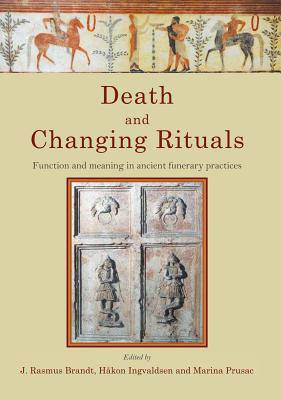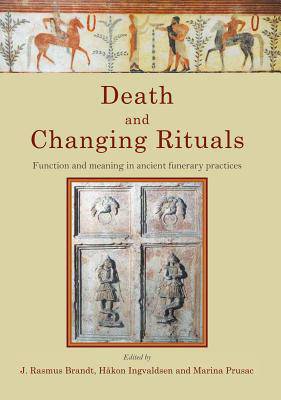
Door een staking bij bpost kan je online bestelling op dit moment iets langer onderweg zijn dan voorzien. Dringend iets nodig? Onze winkels ontvangen jou met open armen!
- Afhalen na 1 uur in een winkel met voorraad
- Gratis thuislevering in België vanaf € 30
- Ruim aanbod met 7 miljoen producten
Door een staking bij bpost kan je online bestelling op dit moment iets langer onderweg zijn dan voorzien. Dringend iets nodig? Onze winkels ontvangen jou met open armen!
- Afhalen na 1 uur in een winkel met voorraad
- Gratis thuislevering in België vanaf € 30
- Ruim aanbod met 7 miljoen producten
Zoeken
Death and Changing Rituals
Function and Meaning in Ancient Funerary Practices
€ 62,95
+ 125 punten
Omschrijving
The forms by which a deceased person may be brought to rest are as many as there are causes of death. In most societies the disposal of the corpse is accompanied by some form of celebration or ritual which may range from a simple act of deportment in solitude to the engagement of large masses of people in laborious and creative festivities. In a funerary context the term ritual may be taken to represent a process that incorporates all the actions performed and thoughts expressed in connection with a dying and dead person, from the preparatory pre-death stages to the final deposition of the corpse and the post-mortem stages of grief and commemoration. The contributions presented here are focused not on the examination of different funerary practices, their function and meaning, but on the changes of such rituals - how and when they occurred and how they may be explained. Based on case studies from a range of geographical regions and from different prehistoric and historical periods, a range of key themes are examined concerning belief and ritual, body and deposition, place, performance and commemoration, exploring a complex web of practices.
Specificaties
Betrokkenen
- Uitgeverij:
Inhoud
- Aantal bladzijden:
- 320
- Taal:
- Engels
- Reeks:
- Reeksnummer:
- nr. 7
Eigenschappen
- Productcode (EAN):
- 9781782976394
- Verschijningsdatum:
- 31/03/2015
- Uitvoering:
- Hardcover
- Formaat:
- Genaaid
- Afmetingen:
- 190 mm x 244 mm
- Gewicht:
- 1333 g

Alleen bij Standaard Boekhandel
+ 125 punten op je klantenkaart van Standaard Boekhandel
Beoordelingen
We publiceren alleen reviews die voldoen aan de voorwaarden voor reviews. Bekijk onze voorwaarden voor reviews.










